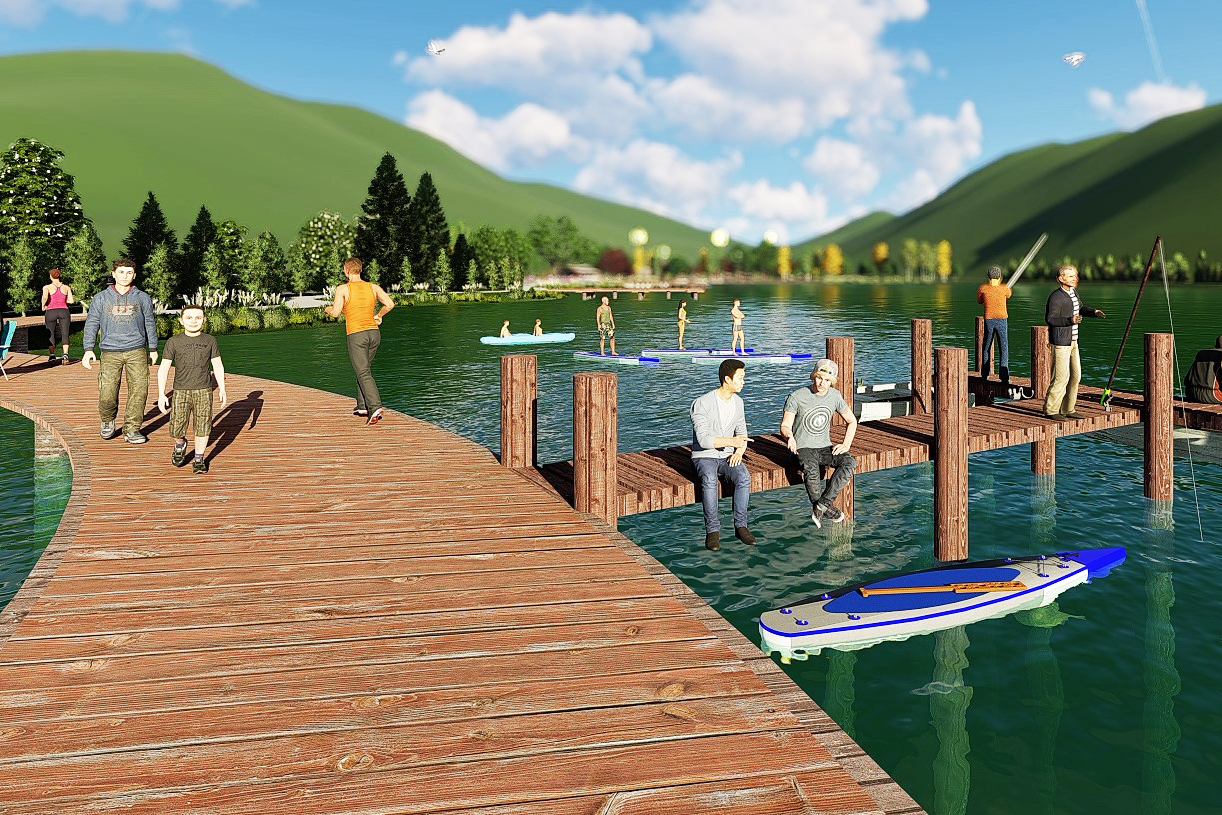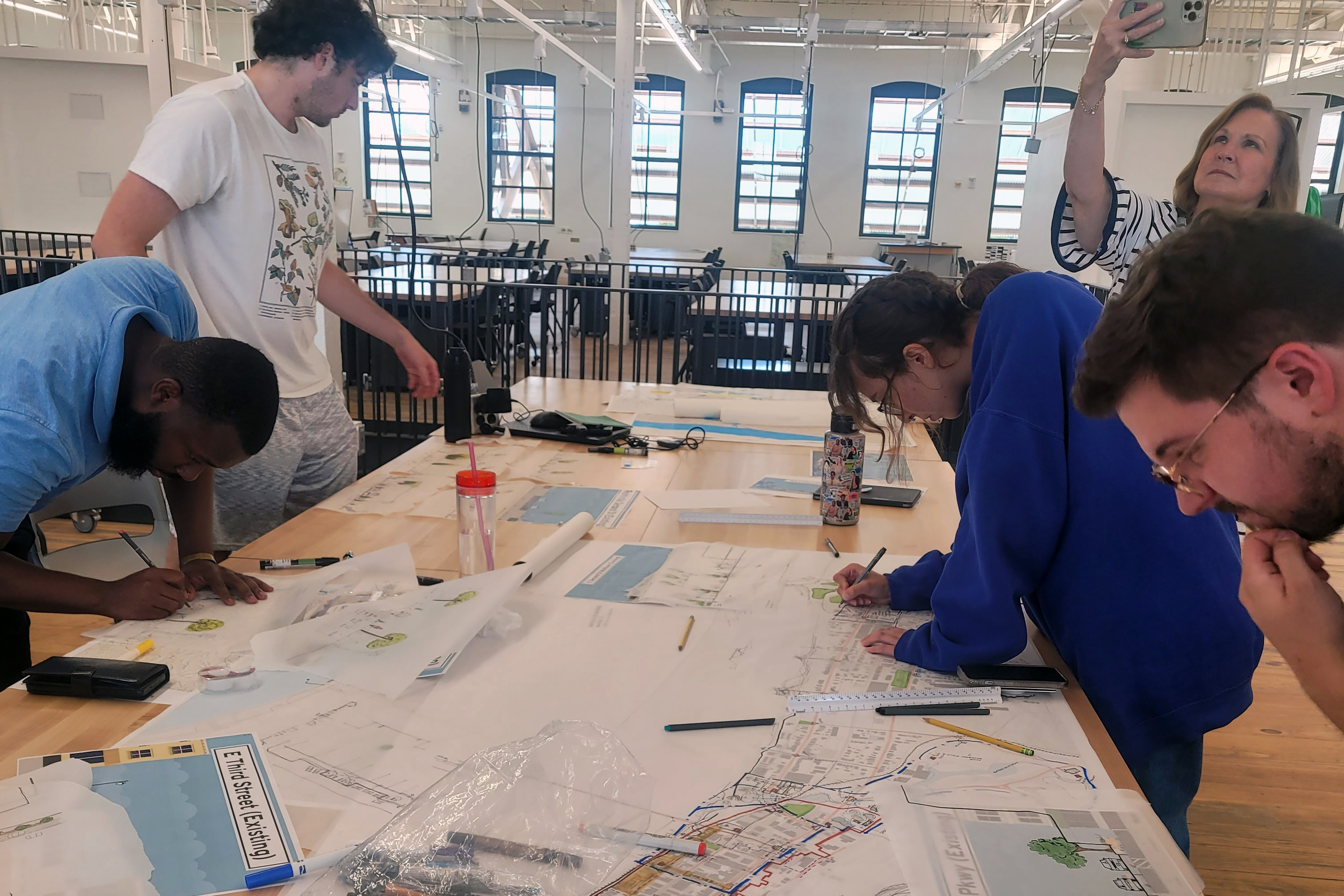Activity Guide | Where Your Sidewalk Begins
Activity Guide | Where Your Sidewalk Begins

INTRODUCTION
In the poem, "Where the Sidewalk Ends", the author Shel Silverstein encourages readers to think in a “childlike way”. He contrasts the imaginative world of children with the grey and unchanging world of adults. In the activity below, you will imagine a sidewalk in your community that is unlike anything we have seen before.
LESSON PLAN
This activity encourages students to consider their neighborhood and what elements make them feel safe or welcome. The lesson will get youth thinking about ways they can be actively involved in transforming their community. They will read a poem, discuss its meaning, complete a worksheet, and reimagine their own place "where the sidewalk ends"
Total Time: 1.5 Hour
Introduction: 20 min.
Start the meeting by reading the poem, Where the Sidewalk Ends. Lead the students in a brief discussion about what the poem means to them. Consider questions like:
- How does this poem make you feel?
- What is the meaning behind this poem?
- What is a detail or line that stands out to you?
- Are there places in your neighborhood that remind you of this poem?
- Where are they?
Brainstorm: 20 min.
Have each student fill out the included worksheet based on their own neighborhood. Lead the students in a short discussion based on the questions on the worksheet. Topics to consider include safety, community image, narrative, historic vs. modern, etc.
Collage: 30 Min.
Based on the student's responses and worksheet, have them design a new sidewalk for their neighborhood. These can be as realistic or imaginative as they would like. Ideas for them to consider include:
- Consider what colors, textures, sounds, and smells will be found on your new sidewalk.
- How do you want your sidewalk to make people feel?
- Where will your sidewalk take people?
- What elements would you keep the same as your current sidewalk?
- What elements would you change?
Reflection: 20 Min.
After the students have completed their sidewalk, invite them to present their ideas to the class. Note why the students selected each element and how they talk about it in relation to the community. What elements influenced their decisions?
WHERE THE SIDEWALK ENDS
Poem by Shel Silverstein
There is a place where the sidewalk ends
And before the street begins,
And there the grass grows soft and white,
And there the sun burns crimson bright,
And there the moon-bird rests from his flight
To cool in the peppermint wind.
Let us leave this place where the smoke blows black
And the dark street winds and bends.
Past the pits where the asphalt flowers grow
We shall walk with a walk that is measured and slow,
And watch where the chalk-white arrows go
To the place where the sidewalk ends.
Yes we'll walk with a walk that is measured and slow,
And we'll go where the chalk-white arrows go,
For the children, they mark, and the children, they know
The place where the sidewalk ends.
WHERE YOUR SIDEWALK BEGINS WORKSHEET
Materials:
- The included worksheet
- A pencil
- Colorful supplies: markers, crayons, colored pencils, watercolors, paint, etc
- Additional paper as needed
- Optional: Magazines you can cut images out of and glue sticks
- Where is somewhere you use a sidewalk? Your home, a local park, or near your school could be some places. List some ideas below.
- What are 5 words you would use to describe this sidewalk?
- Are these positive or negative words?
- What are 5 ways you would change this sidewalk?
- Using your imagination and the ideas you listed above, draw a new sidewalk for your community.
- Consider what colors, textures, sounds, and smells will be found on your new sidewalk.
- What elements would you keep the same as your current sidewalk, and what would you change?
- Use colorful tools to draw your ideas, cut images out from a magazine to paste on, or sketch your ideas below.
- Use additional paper as needed.


